Walking across the Hudson River via 3 popular bridges
View from the Walkway over the Hudson
When visiting the New York area, bridge walking across the Hudson River via the various crossings can be a fun and active way to experience the region, offering picturesque landscapes, historic architecture, great photo ops, and an appreciation for the lay of the land, all while getting your steps in.
While the Walkway Over the Hudson, which connects Poughkeepsie and Highland, NY, is probably the best and easiest pedestrian experience for Hudson River crossing, there are numerous other options. We’ve tried three different ways. In addition to the Walkway Over the Hudson, we have also walked across the Governor Mario Cuomo Bridge (aka, The Tappan Zee) and the George Washington Bridge. Each offers its own unique experience.
Visiting the Walkway Over the Hudson State Historic Park
Touting itself as the “world’s longest elevated pedestrian bridge” the Walkway Over the Hudson stretches 1.28 miles across the Hudson River from the City of Poughkeepsie in Dutchess County on the eastern bank to Highland, NY in Ulster County on the western bank. Rising 212 feet above the river, it offers a spectacular vantage point for appreciating the Hudson Valley, from the Hudson Highlands to the south, all the way to the Catskills to the north.
The bridge was once a major railroad corridor, opened in 1889 as the longest bridge in the world at the time, transporting freight and passenger trains. But in 1974, the tracks were heavily damaged in a fire, and the bridge was shut down. It was eventually restored as a footbridge and reopened in 2009, and has been a favorite for walkers, runners, and cyclists ever since.
Because it is a New York State Park, the walkway is very well maintained and is continually updated. We began at the eastern entrance and were happy to find bathrooms and facilities to be newly constructed and attractive, with fresh brick paths and lots of interesting signage explaining the history of the bridge.
It’s free to cross the walkway, but some special events held at the site (like the Walkway Marathon or July 4th Fireworks) may require fees or reserved spots. It’s a flat and paved surface, with several benches along the way to chill and gaze out on the river. The pavement can get quite hot so consider this if you plan on taking your dog on a sunny day, as it can scorch their paws. Travelers can turn around at any point; for the casual walker, expect the full crossing to take about 30-40 minutes.
Walkway Over the Hudson State Park hours are 7 am to sunset. There are a number of metered parking areas available, managed by NYSP and the cost is about $5 for four hours. Lots are located at 61 Parker Avenue in Poughkeepsie and 87 Haviland Road in Highland.
If arriving on foot, there is a stairway entrance at 131 Washington Street in Poughkeepsie, 0.7 miles from the train station, where parking is also available. There is an elevator entrance at Upper Landing Park, on the Poughkeepsie waterfront side. The 21-story, glass-enclosed ADA-compliant elevator operates 7 days a week, 10 am-6 pm. Since the walkway itself is open until sunset, the elevator may be closed before the walkway is, so if you need the elevator, plan accordingly.
We really enjoyed this walk. The feeling of being suspended over the river is quite breathtaking and peaceful and being so high up, you can see far down the river and take in the scope of the Hudson Valley area. The boats and train tracks below look tiny! We only explored the walkway itself, but the park’s official website suggests nine “discovery zones” to explore on a bike or foot beyond the walkway.
It also connects to additional trails on either side, making it part of the multi-use Empire State Trail network that connects Battery Park in New York City to Albany, and then on to Buffalo or Canada. Phew! Who knew? But even if that’s a bit more of an adventure than one may desire, the Walkway Over the Hudson is a great way to get a taste of this magnificent river valley. And it's not a bad way to get those steps in!
If you are looking for another area attraction the wonderful FDR home and Presidential library is just 10 minutes north on Route 9. You can read more in our post: Visiting the Home of FDR and Presidential Library.
The walking and bike paths on the Governor Mario Cuomo Bridge
How to walk over the Governor Mario Cuomo Bridge (The Tappan Zee)
The Governor Mario Cuomo Bridge was opened to traffic in 2018, replacing the Tappan Zee Bridge that stood since the 1950s. Many New Yorkers still refer to the Cuomo as the Tappan Zee, even though it is a totally new structure, but old habits die hard. It provides the same crossing that its predecessor did, spanning the Hudson River at one of its widest points, connecting Rockland and Westchester counties.
When it was built, its namesake’s son, Andrew Cuomo, was governor, so you can imagine that it was a bit of a pet project, resulting in a beautiful, artistic, cable-stayed structure that is strikingly lit at night and a darn nice pedestrian and cyclist experience to boot.
We were impressed by the pleasant design and usability of The Bridge Path. Located on the northern side of the westbound span, the 12-foot wide path is painted a soothing nautical blue, and at 3.6 miles, it is one of the longest shared use paths in the country. The two landings on either side offer Welcome Centers, bathrooms and public art displays, and of course, access to the pathway.
And delightfully, there are six great scenic overlooks along the path, with plenty of seating space to relax and look out over the river, contemplating your awesome free-spirited life. ;) Each stop is slightly different, having been designed in connection with the community to celebrate the history of the Hudson Valley, including interactive and educational public art.
The clean, modern, industrial style makes one definitely feel like they are on a ship at sea. (At least that’s how I felt!) Each overlook boasts an unobstructed view through walls of safety glass and its own surprising details to discover. At one stop, you can see the river flowing directly below you and discover inscriptions when you look up, and at another, a mirror-polished canopy captures the Manhattan skyline and reflects its image downward.
View of the Hudson River from the Governor Mario Cuomo Bridge
We enjoyed breaking out the Gorilla Pod and trying to get some time-lapse video of the traffic on the bridge, because hey, that’s what we do. Some fellow bridge explorers, a noisy group of Italian bicyclists who seemed to be having the time of their lives, stopped for selfies at one of the scenic stops and their enthusiasm was contagious. The Hudson River is the place to be!
The Governor Mario Cuomo Bridge Path is open 7 days a week, from 6 am to 10 pm. The approximate walk time one way is 80 minutes (yes it’s a long one) and biking time is estimated at 20 minutes one way. Visitor parking and amenities are available on both the Rockland and Westchester landings. There is also a free shuttle bus providing free weekend service from commuter parking lots in Tarrytown and South Nyack from May through October. Updates on the shuttle can be accessed on the Bridge’s Twitter account. @GMMCB
If you are looking for another adventure nearby check out our post about exploring Sleepy Hollow and Tarrytown.
View of the George Washington Bridge from Fort Lee, New Jersey
Walking over the George Washington Bridge
Lastly, but certainly not least, we did the classic, old-school urban explorer bridge walk, across The George Washington Bridge. Unlike the previous two crossings highlighted above, this one connects New Jersey and New York, beginning in Fort Lee on the NJ side, and ending on the west side of upper Manhattan in NYC.
There are two walkways, a south sidewalk and a north sidewalk, and construction projects sometimes change which one is open. In New Jersey, the entrances to the north and south sidewalks are located on Hudson Terrace in Fort Lee. In New York, the south sidewalk entrance is located near the corner of West 177th Street and Cabrini Boulevard, and the north sidewalk entrance is located near the corner of West 179th Street and Cabrini Boulevard. You may reach both sidewalks from the George Washington Bridge Bus Station in Upper Manhattan, located between West 178th and West 179th streets and Fort Washington Avenue and Broadway.
Hours are from 6 am to midnight. There is no fee to use the sidewalks.
This popular shared pathway can get crowded so be aware of joggers and commuting cyclists who aren’t interested in stopping for photos as you may be. Keep to the right! It’s about a 40-45 minute walk to get across, offering beautiful views of the Palisades and New York City along the way. (The Palisades is one of our favorite hiking spots and worth a visit of its own, but for now, let’s just admire it from the GWB.) Additionally, you can easily tack on a visit to Fort Lee Historic Park to your bridge bike ride for a bit of history and stunning overlooks of the river and the bridge.
It can get a bit noisy on this bridge with all the traffic that transverses it on any given day, and watch out for static charge zaps from the railing as those tires speed by (best just not to touch it).
View of the George Washington Bridge looking toward Manhattan
One of my favorite things about the George Washington Bridge is the tiny Jeffrey’s Hook Lighthouse, located just below the bridge on the NYC side. It’s just a lighthouse, without much fanfare surrounding it, but it is the subject of one of my favorite children’s books. The Little Red Lighthouse and the Great Gray Bridge, written by Hildegarde H. Swift and illustrated by Lynd Ward, was published in 1942, long before I was even born, but the sweet, affirming story of how even the small are important offers a timeless theme. I enjoyed reading it to my boy when he was little. The book ends by encouraging the reader to go to Riverside Drive in New York City and "see for yourself" the lighthouse next to the bridge. If you look straight down at the end of the south sidewalk on the NY side, you can look down at it.
But a more photogenic angle may be a wide shot from the NJ side before you get on the bridge. It’s no longer operational, but it is run by the New York City Dept. of Parks and Recreation after it was saved from destruction by an outcry from children in 1951. Once a year in October, it’s open to the public during the Open House New York weekend festival.
While definitely the most rugged and least modernized of the crossings we experienced, the fact that the GWB connects directly to Manhattan makes it something particularly special. It’s worth a go just for the historic “visiting a landmark” experience, as long as you don’t mind a more citified journey.
If you are looking for other things to do in NYC, check out this blog post about visiting the area around the World Trade Center.

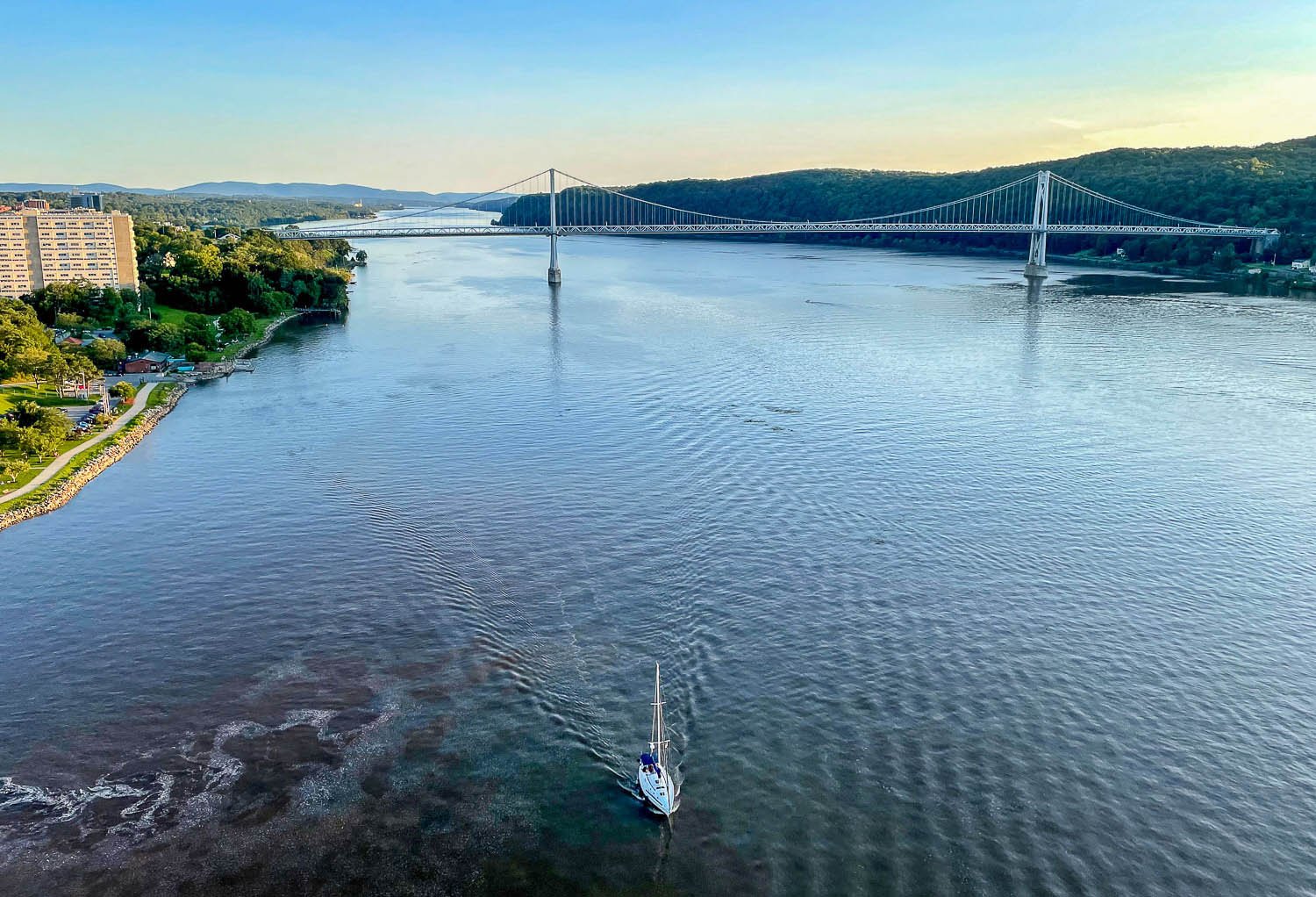
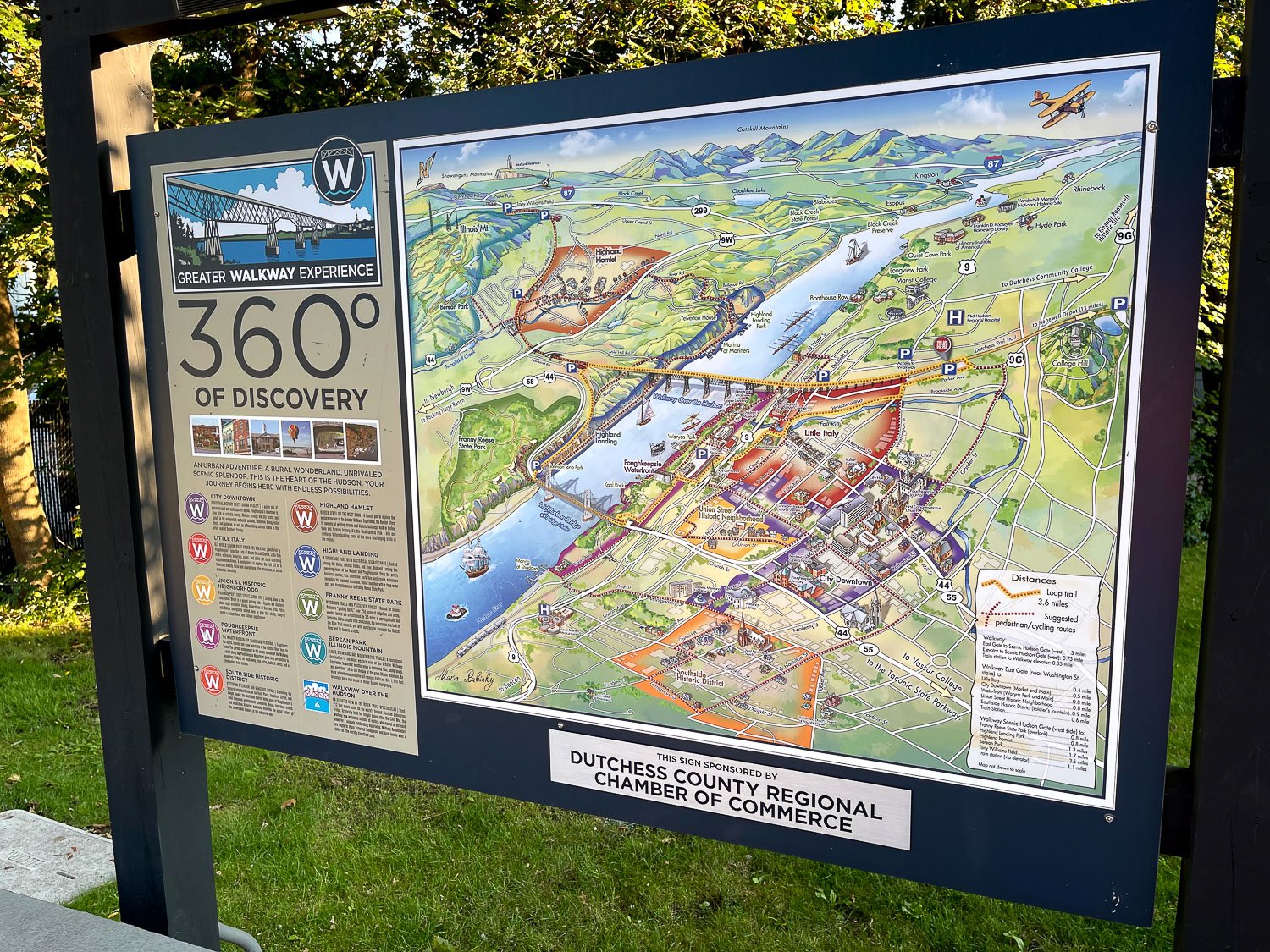
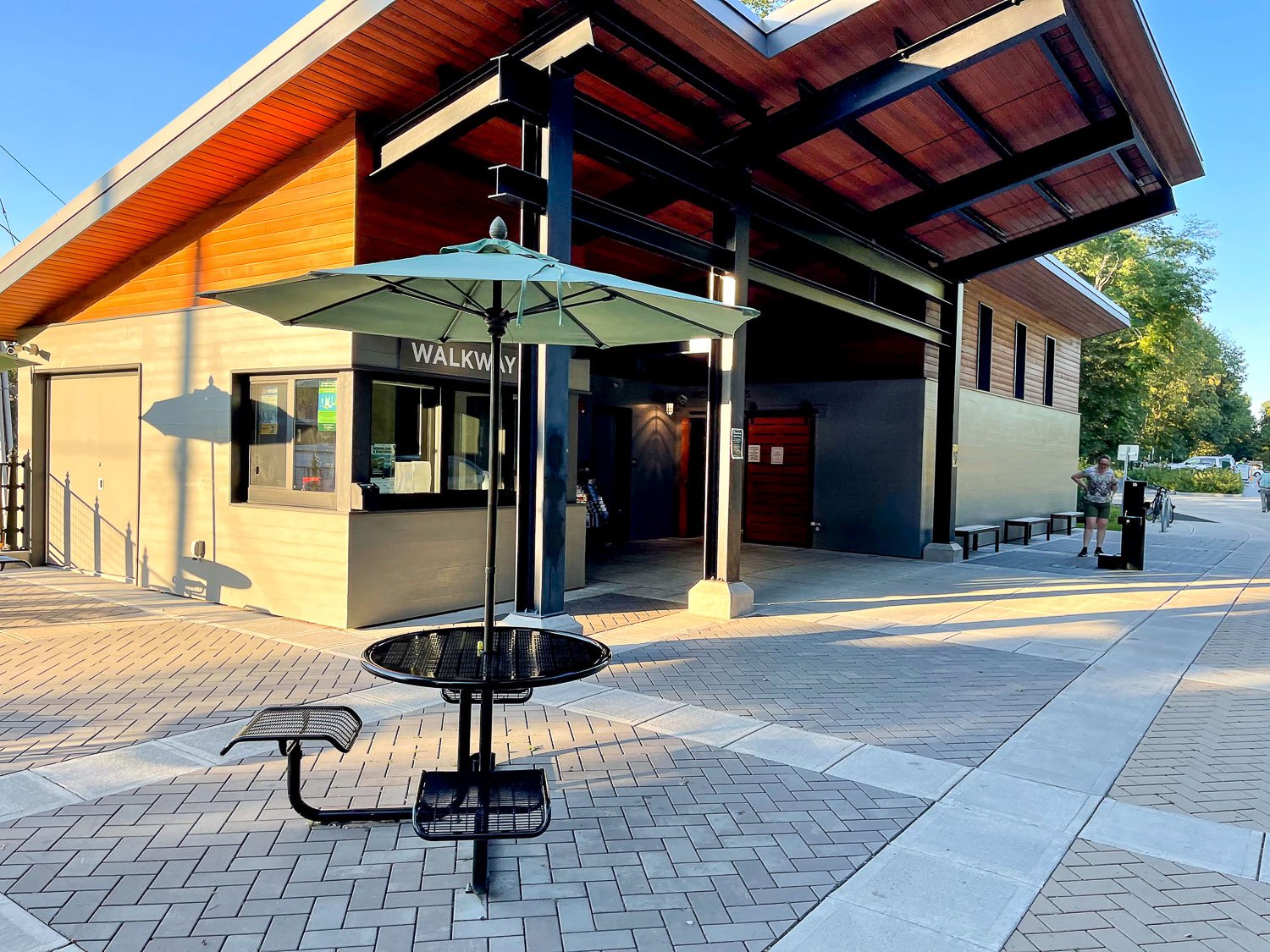

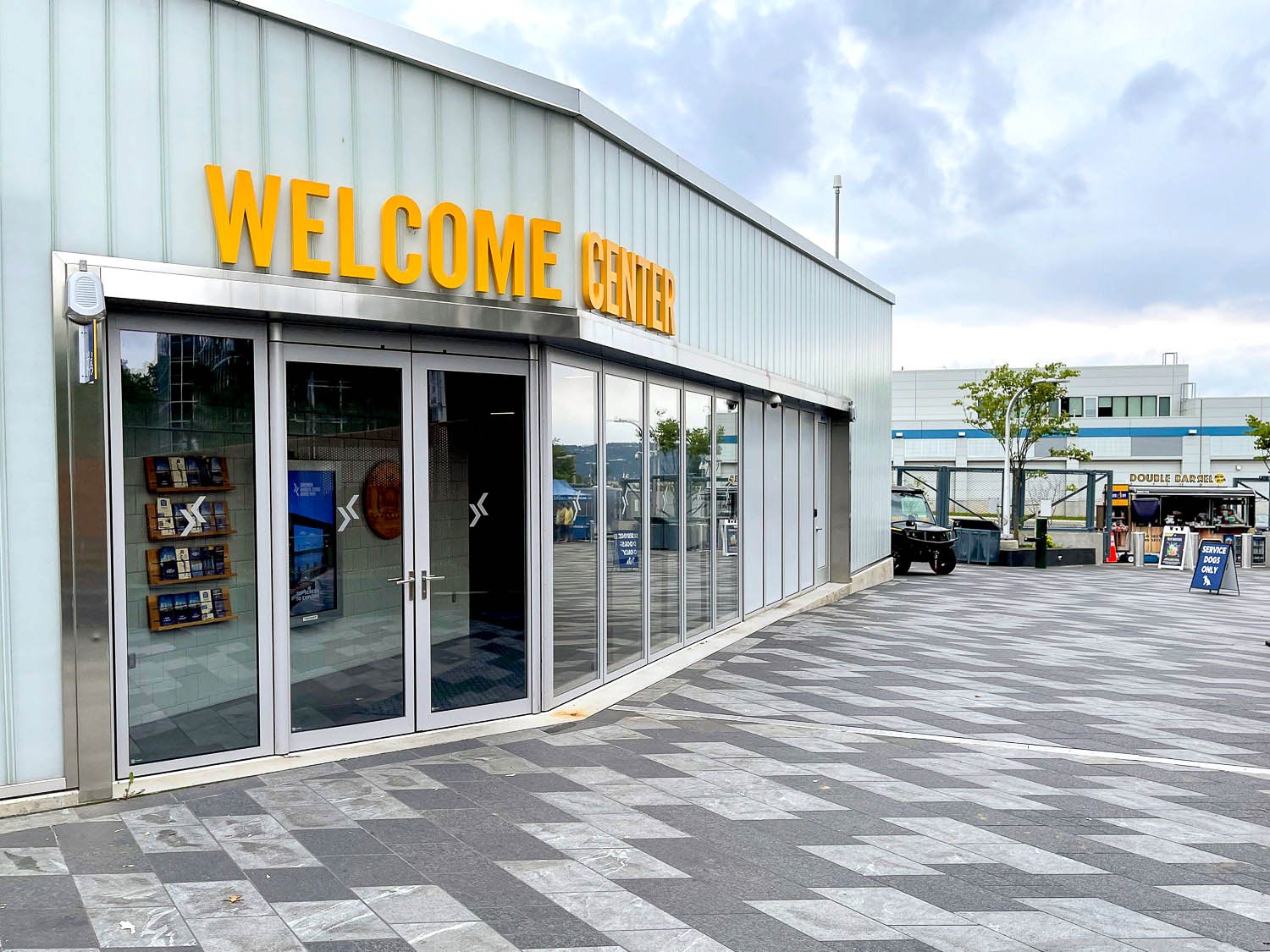
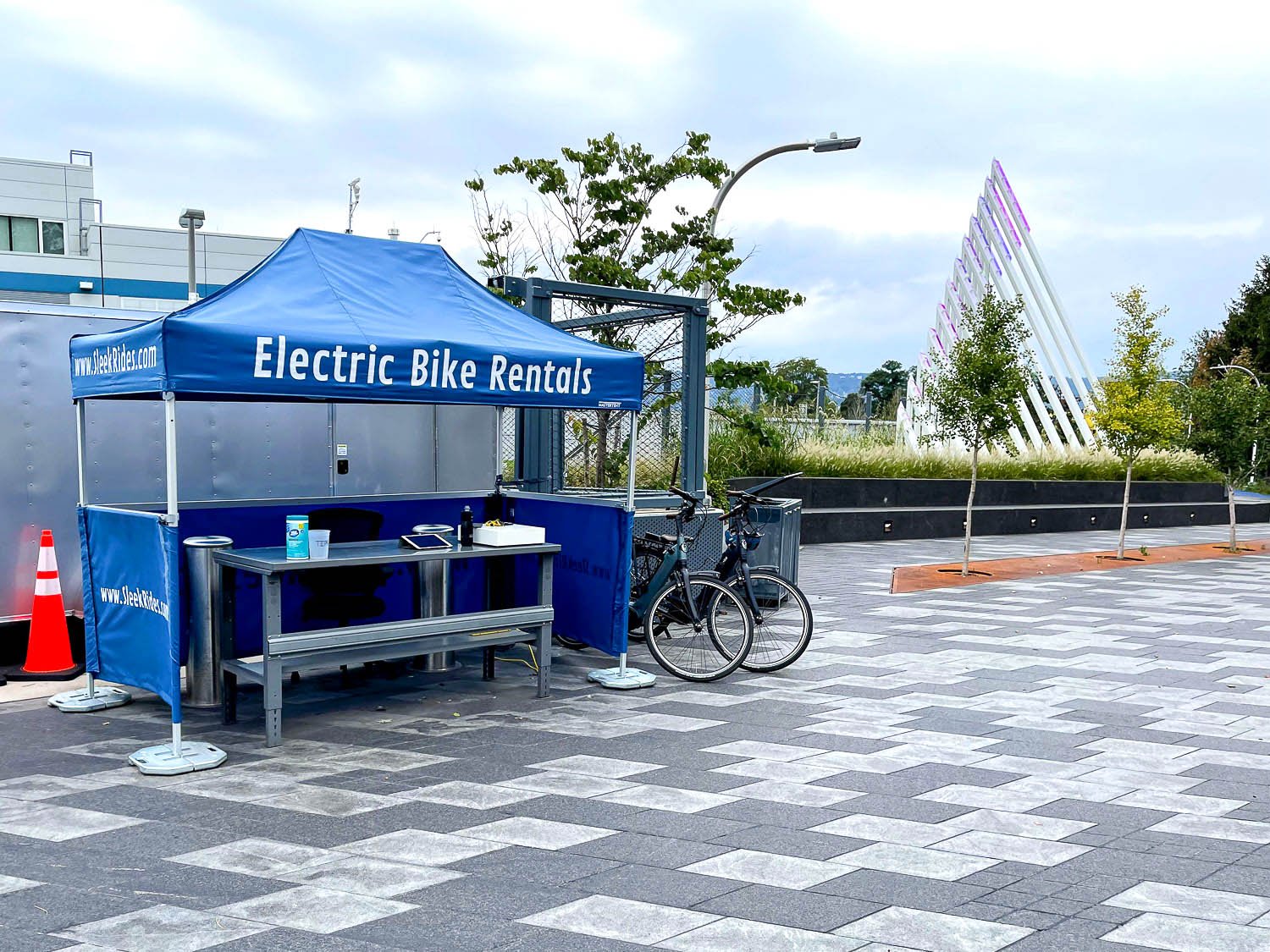
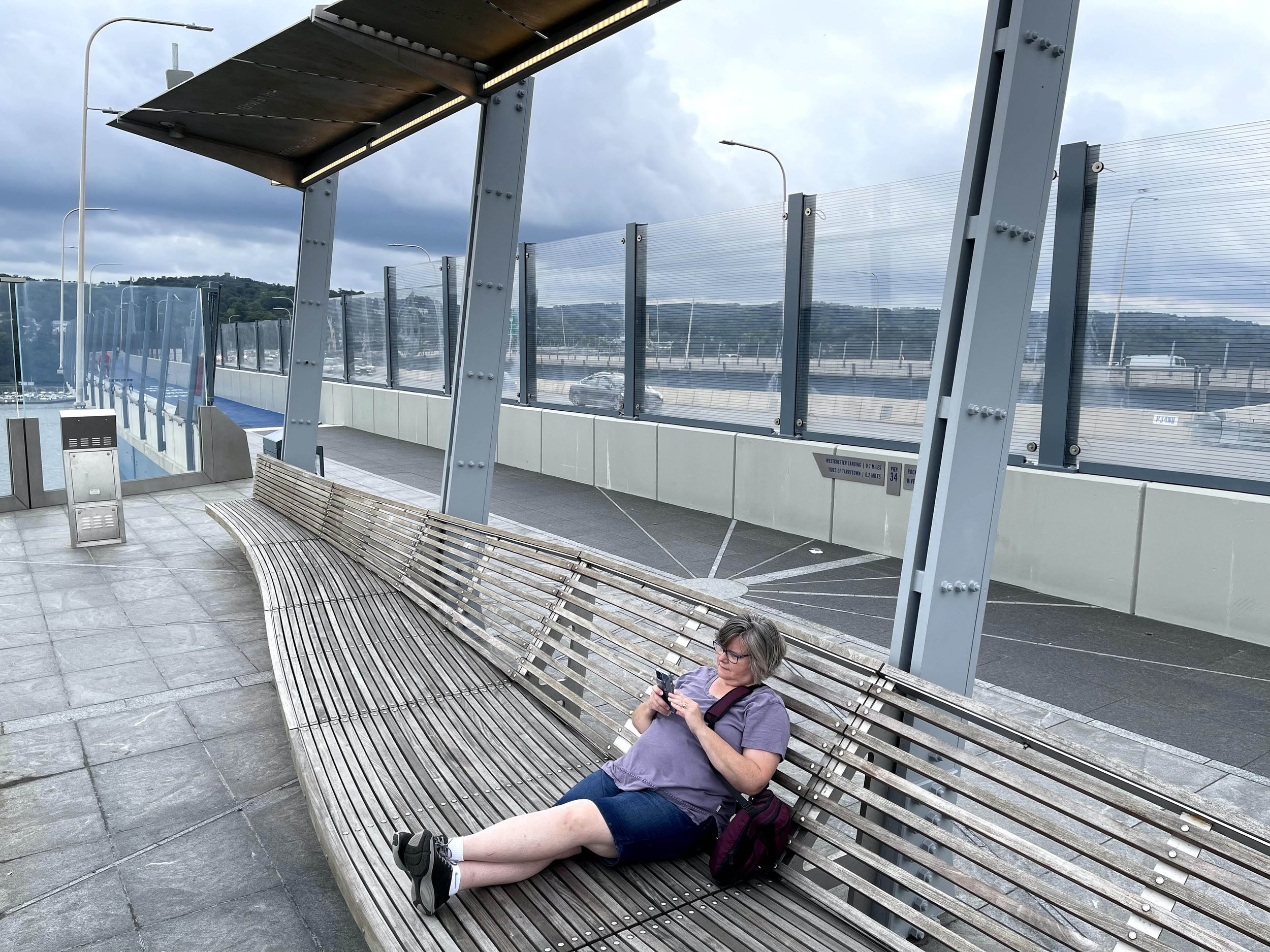





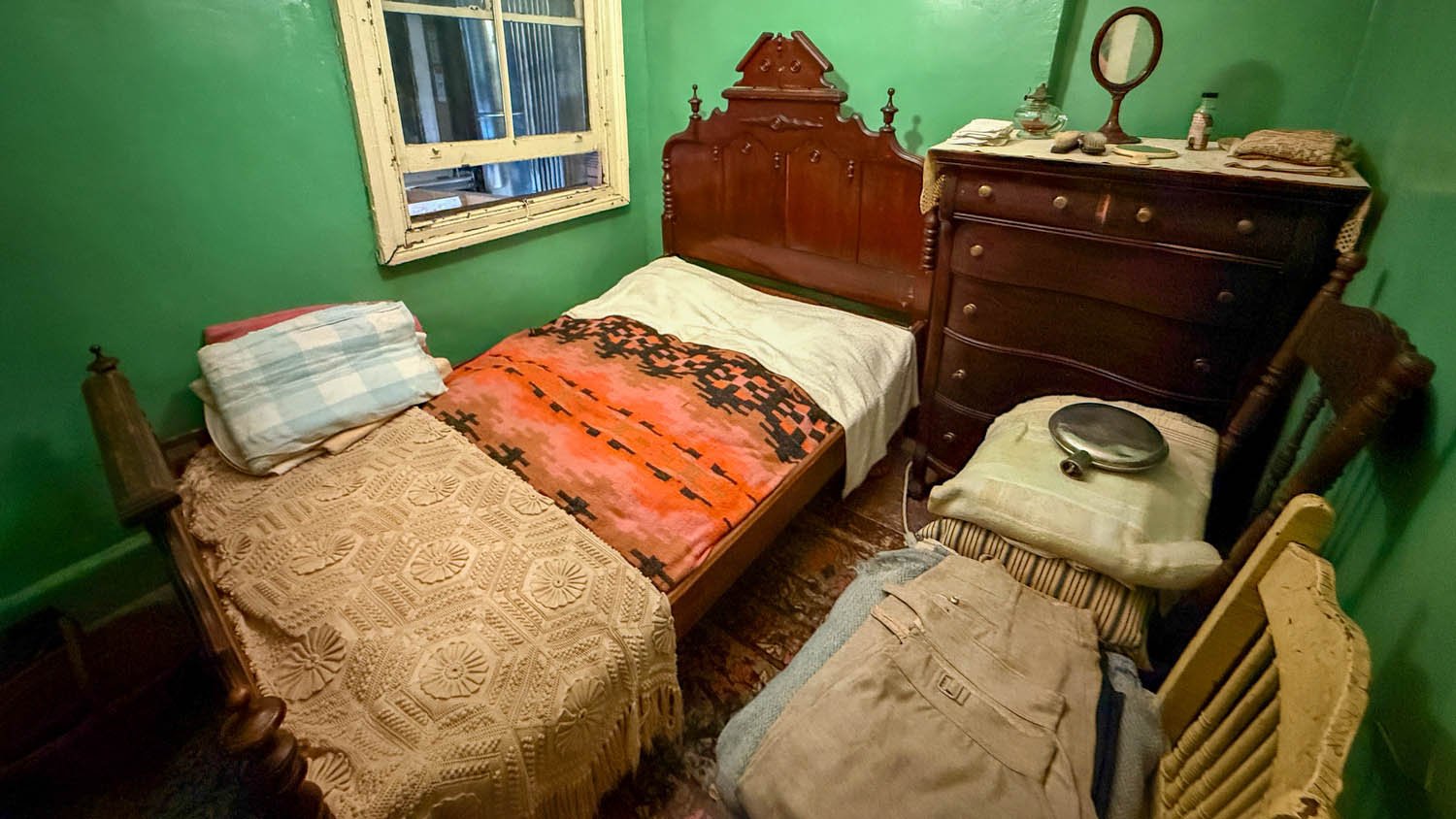


If you are looking to get away from the hustle of New York City without ever leaving the city, then a quick subway trip to the Met Cloisters is the place to go.
The building incorporates real medieval architectural elements imported from Europe and showcases tapestries, sculpture, stained glass, metalwork, and medieval gardens.